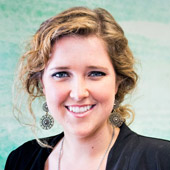Professor of Strategic Management, Strategic Innovation Expert, Author
Costas Markides Biography
Leading business and strategy speaker Costas Markides is Professor of Strategic and International Management at the London Business School (University of London), where he also holds the Robert P. Bauman Chair of Strategic Leadership. His academic work focuses extensively on strategic innovation, business-model innovation, diversification, and international acquisitions.
Along with Paul Geroski, Markides is the co-author of the groundbreaking "Fast Second: How Smart Companies Bypass Radical Innovation to Enter & Dominate New Markets," which uses the metaphor of a landscape to describe the business world. The book was shortlisted for the Financial Times-Goldman Sachs Management Book of the Year in 2005 and examines how big, established companies can create radical new markets by acting as "colonists" or "consolidators." Drawing on examples of successful "fast-second" firms such as Microsoft, Amazon, Canon, JVC, Heinz, and others, Markides explains how new markets have the potential to be successful and provides insight on when to make a move into a new market, how to scale up a market, where to position a company in the market, and whether to be a colonist or consolidator.
Markides was named to the "Thinkers 50," a ranking of the 50 most influential living management thinkers in the world. His "All the Right Moves: A Guide to Crafting Breakthrough Strategy" was shortlisted for the Igor Ansoff Strategic Management Award 2000 and delves into why successful business strategies should focus on identifying the right customers, products, and efficient operational methods. His research and presentations cover a wide range of topics, such as institutionalizing innovation within organizations, the implications of the digital revolution on business, and strategic responses to disruption. His latest book, "Game-Changing Strategies: How to Create new Market Space in Established Industries by Breaking the Rules," further explores these themes.
A native of Cyprus, Costas Markides received his BA and MA in economics from Boston University and his MBA and DBA from the Harvard Business School. He has been a Fellow of the World Economic Forum in Davos, Switzerland, from 1999 to 2003 and has served on the Editorial Boards of several academic journals, including the Strategic Management Journal and the Academy of Management Journal. Currently, he is working on a new book titled "Great oaks from little acorns grow: How ordinary people bring about social change," continuing his exploration of how innovation and strategic thinking drive organizational and societal transformations.
Contact a speaker booking agent to check availability on Costas Markides and other top speakers and celebrities.
Costas Markides Speaking Topics
-
International Competitiveness
-
Exceeding Clients' Expectations
-
How do I book Costas Markides to speak at my event?
Our experienced booking agents have successfully helped clients around the world secure speakers like Costas Markides for speaking engagements, personal appearances, product endorsements, or corporate entertainment since 2002. Click the Check Availability button above and complete the form on this page to check availability for Costas Markides, or call our office at 1.800.698.2536 to discuss your upcoming event. One of our experienced agents will be happy to help you get speaking fee information and check availability for Costas Markides or any other speaker of your choice. -
What are the speaker fees for Costas Markides
Speaking fees for Costas Markides, or any other speakers and celebrities, are determined based on a number of factors and may change without notice. The estimated fees to book Costas Markides are $20,000 - $30,000 for live events and $10,000 - $20,000 for virtual events. For the most current speaking fee to hire Costas Markides, click the Check Availability button above and complete the form on this page, or call our office at 1.800.698.2536 to speak directly with an experienced booking agent. -
What topics does Costas Markides speak about?
Costas Markides is a keynote speaker and industry expert whose speaking topics include Author, Business, Business Consulting, Business Growth, Business Leadership, Corporate Culture, Economy, Human Resources, Innovation, Leadership, Professors, Strategic Leadership, World Affairs -
Where does Costas Markides travel from?
Costas Markides generally travels from UK, but can be booked for private corporate events, personal appearances, keynote speeches, or other performances. For more details, please contact an AAE Booking agent. -
Who is Costas Markides’s agent?
AAE Speakers Bureau has successfully booked keynote speakers like Costas Markides for clients worldwide since 2002. As a full-service speaker booking agency, we have access to virtually any speaker or celebrity in the world. Our agents are happy and able to submit an offer to the speaker or celebrity of your choice, letting you benefit from our reputation and long-standing relationships in the industry. Please click the Check Availability button above and complete the form on this page including the details of your event, or call our office at 1.800.698.2536, and one of our agents will assist you to book Costas Markides for your next private or corporate function. -
What is a full-service speaker booking agency?
AAE Speakers Bureau is a full-service speaker booking agency, meaning we can completely manage the speaker’s or celebrity’s engagement with your organization from the time of booking your speaker through the event’s completion. We provide all of the services you need to host Costas Markides or any other speaker of your choice, including offer negotiation, contractual assistance, accounting and billing, and event speaker travel and logistics services. When you book a speaker with us, we manage the process of hosting a speaker for you as an extension of your team. Our goal is to give our clients peace of mind and a best-in-class service experience when booking a speaker with us. -
Why is AAE Speakers Bureau different from other booking agencies?
If you’re looking for the best, unbiased speaker recommendations, paired with a top-notch customer service experience, you’re in the right place. At AAE Speakers Bureau, we exclusively represent the interests of our clients - professional organizations, companies, universities, and associations. We intentionally do not represent the speakers we feature or book. That is so we can present our clients with the broadest and best performing set of speaker options in the market today, and we can make these recommendations without any obligation to promote a specific speaker over another. This is why when our agents suggest a speaker for your event, you can be assured that they are of the highest quality with a history of proven success with our other clients.
Costas Markides is a keynote speaker and industry expert who speaks on a wide range of topics such as International Competitiveness, Exceeding Clients' Expectations, Using Innovation & Creativity to Achieve Strategic Breakthroughs, Managing Diversified Businesses, Fast Second: Bypassing Radical Innovation to Enter & Dominate New Markets and From Strategy Formulation to Strategy Execution: Why Clever People Make Silly Mistakes. The estimated speaking fee range to book Costas Markides for your event is $20,000 - $30,000. Costas Markides generally travels from UK and can be booked for (private) corporate events, personal appearances, keynote speeches, or other performances. Similar motivational celebrity speakers are Anil Gupta, Richard Florida, Joseph Stiglitz, Ian Goldin and Gary Hamel. Contact All American Speakers for ratings, reviews, videos and information on scheduling Costas Markides for an upcoming live or virtual event.
This website is a resource for event professionals and strives to provide the most comprehensive catalog of thought leaders and industry experts to consider for speaking engagements. A listing or profile on this website does not imply an agency affiliation or endorsement by the talent.
All American Entertainment (AAE) exclusively represents the interests of talent buyers, and does not claim to be the agency or management for any speaker or artist on this site. AAE is a talent booking agency for paid events only. We do not handle requests for donation of time or media requests for interviews, and cannot provide celebrity contact information.
If you are the talent and wish to request a profile update or removal from our online directory, please submit a profile request form.





























